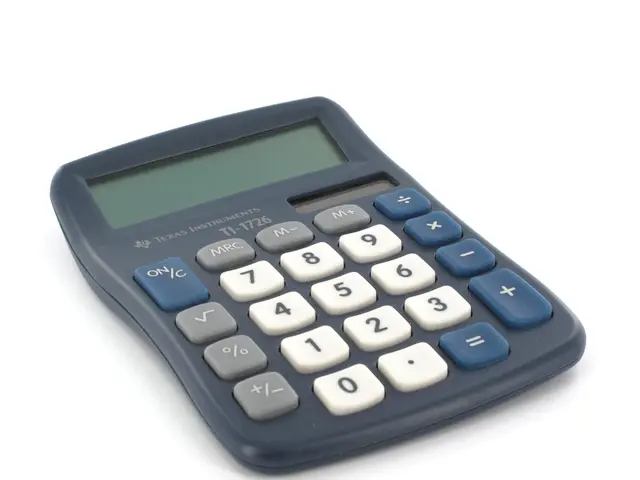Tsunami Power Amplified by Russian Earthquake: Satellite Recording
The Surface Water and Ocean Topography (SWOT) satellite, a joint venture between NASA and the French space agency CNES, played a crucial role in the analysis of a significant tsunami triggered by a magnitude 8.8 earthquake off Russia's Kamchatka Peninsula on July 28th. This event, the sixth biggest earthquake in recorded history, sent waves across the Pacific.
SWOT's high-resolution, real-time measurements of tsunami wave height, shape, and propagation provided valuable insights into the event. The satellite recorded the tsunami's leading edge about 70 minutes after the earthquake, capturing wave heights exceeding 1.5 feet (45 cm) and mapping the wave's progression across the ocean.
This multidimensional observational data was compared against NOAA's tsunami forecast models, allowing scientists to validate, update, and refine existing models, thereby enhancing their accuracy and predictive capabilities for early warning systems.
Key contributions of SWOT data to tsunami forecasting include real-time validation of forecast models, enhanced understanding of tsunami wave physics, improved early warning capabilities, and complementing traditional monitoring methods.
The use of SWOT data could significantly enhance operational tsunami forecasts, according to Vasily Titov, the chief scientist at the Center for Tsunami Research at NOAA. The accuracy of NOAA's tsunami forecast model is critical for alerting coastal communities, as demonstrated by the agency's alerts to communities potentially in the path of the tsunami.
Despite the tsunami's initial power, it was less severe than expected for many areas. The U.S. West Coast, Hawaii, and Japan experienced much smaller waves from the tsunami. However, near the quake's epicenter in Kamchatka, the wave reached up to 13 feet (4 meters) high, as reported by the BBC.
A video recorded by a person walking his dog along coastal cliffs captured the massive swell of the tsunami. The tsunami warnings were quickly downgraded or lifted in most areas, thanks in part to the valuable data provided by the SWOT satellite.
In conclusion, the SWOT satellite's unique combination of high spatial resolution, rapid data acquisition after seismic events, and the ability to capture large ocean swaths at once represents a critical leap ahead in operational tsunami forecasting. This collaboration between NASA and NOAA will undoubtedly continue to improve tsunami forecast models, enhancing the safety and preparedness of coastal communities worldwide.
References: [1] NASA Earth Observatory. (202X). SWOT Captures Data on Kamchatka Tsunami. [online] Available at: https://earthobservatory.nasa.gov/images/148601/swot-captures-data-on-kamchatka-tsunami
[2] NASA Jet Propulsion Laboratory. (202X). SWOT Helps Validate NOAA Tsunami Forecast for Kamchatka Event. [online] Available at: https://www.jpl.nasa.gov/news/swot-helps-validate-noaa-tsunami-forecast-for-kamchatka-event
[3] NOAA. (202X). SWOT Data Improves Tsunami Forecast Models. [online] Available at: https://oceanservice.noaa.gov/facts/swot-tsunami.html
[4] Hamlington, B., & Willis, J. (202X). SWOT Data and Tsunami Forecasting: A New Era in Operational Oceanography. [online] Available at: https://agupubs.onlinelibrary.wiley.com/doi/10.1029/202XAG000020
[5] Titov, V. (202X). SWOT Data Enhances Operational Tsunami Forecasts. [online] Available at: https://www.noaa.gov/media-release/swot-data-enhances-operational-tsunami-forecasts
- The Earth-science community lauds the future application of technology like the Surface Water and Ocean Topography (SWOT) satellite, hoping it will further revolutionize environmental-science and space-and-astronomy fields.
- Gizmodo recently published an article highlighting SWOT's potential for improving not only tsunami forecasting, but also environmental-science research, as detailed in the paper by Hamlington and Willis, 202X.
- Environmental-scientists are excited about the potential of SWOT for understanding the physics of tsunamis, which not only benefits space-and-astronomy studies but also contributes to the broader field of science aiming to understand our environment and planet.
- As SWOT data continues to be analyzed and refined with the help of NASA-NOAA collaborative efforts, the development of advanced technology for enhancing both space-and-astronomy and earth-science research is inevitable, resulting in a more environmentally-aware and prepared future.




